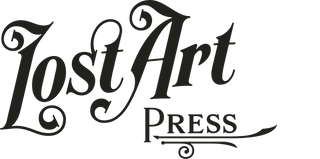Shop Collections
Customer Testimonials

'Fall in love'
Lost Art Press books and tools make me fall in love with woodworking every time I pick them up.
– Misha Manulis

'Superb'
I own many of the tools made by Crucible Tools. They are a pleasure to use and always work as intended - plus the fit and finish are superb.
– Kyle Barton

'Further into the craft'
Every book I’ve purchased from Lost Art Press has led me further into the craft of woodworking.
– Mike Russo
The Welsh Stick Chair: A Visual Record
What's a stick chair? You can learn all about them here.
By Tim and Betsan Bowen
The best way to develop an eye for chair design is to study lots of excellent and authentic examples. Tim and Betsan Bowen, owners of Tim Bowen Antiques in Wales, have long specialized in vernacular furniture and folk art from Wales and Britain in general. And now they have poured that knowledge into a delightful and informative book, “The Welsh Stick Chair: A Visual Record.”
Published by the Bowens in Wales, “The Welsh Stick Chair” is a photographic record of 31 of the most interesting Welsh chairs that have passed through their gallery in Ferryside. The chairs range from rough-and-ready examples all the way up to the chair that John Brown declared was the finest Welsh form he’d ever seen.
The pieces are illustrated with beautiful full-color photos and text (both in Welsh and English) that discusses each chair’s known provenance, repairs, materials and construction methods. (This is not a book of plans; nor does it include dimensions.)
Many of the chairs in the book are stunning forms, and are examples that you won’t see on the internet or in other books on Welsh furniture. In addition to the 31 chairs, the Bowens included 13 related vernacular forms at the end of the book, including a number of staked stools, cricket tables and a pig bench. Plus there’s a map of Wales that designates where each piece in the book likely originated.
“The Welsh Stick Chair: A Visual Record” is softcover and measures 7” x 9-3/8” with 120 pages. The paper is a heavy matte stock that is nice and white, leading to excellent detail and color reproduction.
If you are interested in vernacular chairs or Welsh furniture in general, this book is highly recommended. Quantities are limited.
Customers in the U.K. can order the book directly from Tim Bowen Antiques.
About the Authors

Tim and Betsan Bowen established Tim Bowen Antiques in Ferryside, Carmarthenshire in 2003. Tim, born and raised in West Wales discovered an interest in vernacular furniture and folk art when he worked weekends in a local auction room. He went onto work for many years at Country Antiques Kidwelly. Betsan worked in the prime London property market for twenty years. Their passion for country furniture, folk art is as much about a joy in its form, colour and authenticity as well as its construction, purpose and history by makers whose names are usually long forgotten. Their stock of furniture, folk art, textiles, pottery and pictures are sold online or by appointment.
Read more about Tim and Betsan in our full profile.










































